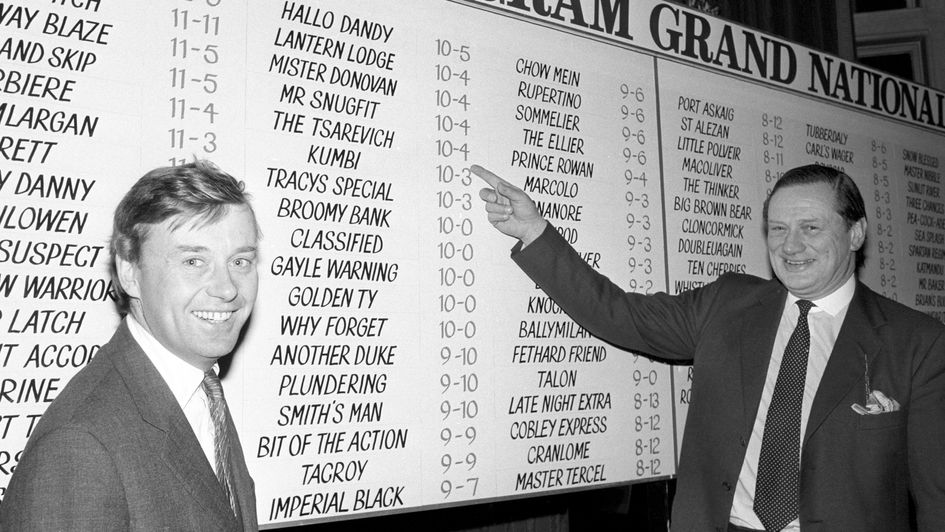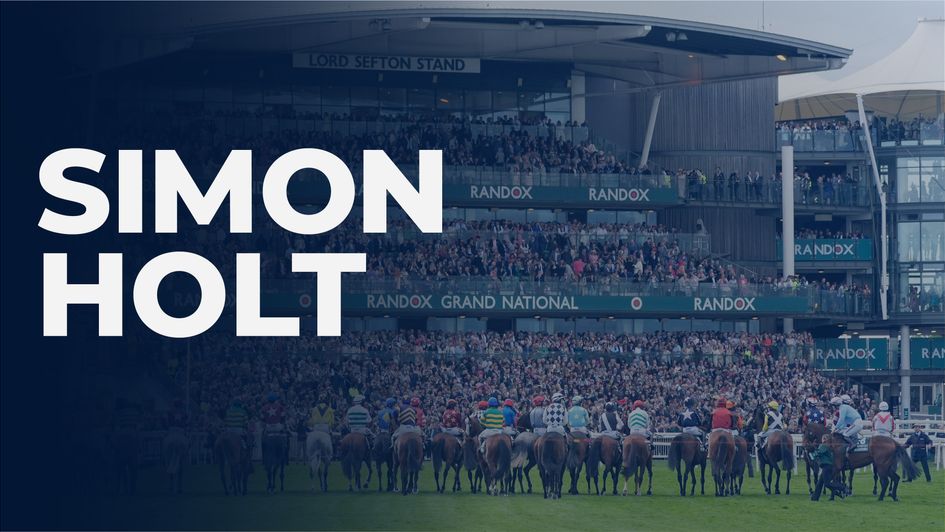For many a child of the sixties and seventies, the Grand National was an annual televisual treat and, hopefully, ITV viewers still feel the same.
In those days, the BBC did a great job with their big-race build up fronted over many years by big name sports presenters like Frank Bough, David Coleman and the unbelievably suave Des Lynam whose 'twinkle in the eye' interviews with Jenny Pitman became an annual event.
Everyone seemed to have a flutter on the National, the betting shops were packed and the race, described iconically by Sir Peter O’Sullevan, Julian Wilson and John Hanmer was thrilling to watch even if, like those who switch off after the first bend of the Grand Prix, many of the millions watching were probably half hoping for a few thrills and spills.
Then, in 2012, amid already growing sensitivities, everything changed.
Two horses, the Gold Cup winner Synchronised and a much loved stable favourite According To Pete were killed and BBC viewers were able to see, in the background on the second circuit, a covered carcass.
Next year the race was broadcast on Channel 4.
While the TV viewing figures are nowhere near what they were when the National stopped a nation, the race remains one of the biggest sporting events of the year even though it is a somewhat different spectacle.
Under perceived pressure, the course was given a makeover. The fences on the National course are now smaller and less stiff, Bechers Brook has no drop at all, the starting position has been moved and the maximum field size has been reduced from 40 to 34.
All told there is less risk and trainers are generally more willing than they were to run a high class chaser.
That’s not to say very good horses didn’t run before but now there are more of them and the variety of runners, such as horses trained in smaller yards, is not so evident.
Thus, the race has lost some of its romance and is now widely described as “just another staying handicap chase” prompting consideration for further changes even though it remains widely enjoyed.
And, notwithstanding the massive prize fund, it is still the race that many an owner, trainer and jockey dreams of winning.
It also remains the biggest betting race of the year and newspapers continue to pull out all the stops with their coverage of an event which provides a boost to circulation.
Any changes should probably be concentrated on the build up, and the make and shape of the National field...
Every February, a lavish lunch is staged to announce the weights to be carried by all the entries in the Randox Grand National. The event is attended by many of the interested parties and a good many professional free-loaders amongst the media.
Historically, this jolly occasion launches the Grand National and the early announcement of the weights has, in the past, enhanced ante post betting markets and provided ample time to build publicity ahead of the big day on the first Saturday of April.

Before the changes to the course, the senior handicapper would take into account the ‘Aintree Factor’ when deciding what weights were to be carried.
Horses who had run well before were likely to be given an extra few pounds and there was a certain intrigue, particularly amongst trainers, as to what weight the likely runners would be allotted.
It was a bit of drama but, with Aintree course 'specialisation' nothing like it used to be, there is no reason for the runners not to run off their handicap ratings. And, in any case, factoring in past Aintree form always looked more like guesswork than proper handicapping.
Nowadays, ante post betting is not what it was and in February, the relentlessly euphoric build up to the Cheltenham Festival is in full swing and no one is really thinking about the Grand National.
Only during the Festival when horse’s future targets are discussed, or immediately after, does Aintree appear large on the horizon.
As such there is no need to reveal the weights so early, and it would be much fairer - and better for the race - to delay the luncheon announcement until the Tuesday (the day of the week when new ratings are published) after Cheltenham.
This would counter any horse being ridiculously well handicapped such as the Gold Cup winner Inothewayurthinkin whose new, much elevated mark would not have applied in the National handicap.
He's not going to run but the Midlands Grand National winner Mr Vango, a horse who could be eminently well suited to the Aintree test, may well have done so (on soft enough ground) if his newly raised mark had been applied. Instead, he won’t make the cut.

There has been much talk of incorporating ‘win and you're in’ races into the National conditions.
The 'Midlands' would be an obvious contender along with the Irish, Welsh and Scottish Nationals. And maybe one or two other long distance chases should be prioritised like the Eider Chase, the Warwick Classic and a few other local Nationals around the country.
This could add sustained interest through the season with the slight reservation that a lowly weighted/rated winner of one of these races might prevent a better quality horse from beating the National 34-runner ballot.
Maybe a qualifier would need to figure in the long handicap.
Further consideration should be given to the suitability and workload of some Grand National entries.
Currently, the conditions require a horse to have run in at least three steeplechases including one in the current season and must also have finished first, second, third or fourth in a steeplechase over two miles seven and a half furlongs or beyond.
But maybe these requirements don’t go far enough as the lack of recent runs needed in chases encourages trainers to protect handicap marks, maybe by running over hurdles or not running at all.
Requiring potential National runners to race more often over fences during the current season could again increase interest (and transparency) while regular appearances are also reassuring that a horse benefits from soundness.
And, again on welfare grounds, perhaps the question should be raised whether a horse who has fallen on his previous start should be allowed to run.
Happily it looks like none of the potential runners next week would come under risk for that reason but there are plenty who have been given carefully constructed campaigns and others whose right to line up is questionable.
For example, last year's winner I Am Maximus has run in two Grade One Chases this season finishing well beaten. Clearly, his target has been to win again (off an 8lb higher mark) but shouldn't he have run more often? There is no racecourse evidence confirming what sort of shape he is in.
Last year's third Minella Indo has had two runs this season, one over fences and the other over hurdles; Conflated has been below par and unplaced in all his starts this season and Beauport has run in two hurdle races since winning over fences at Ascot in November.
By the time the National takes place in April, the 'core' part of the jumps season is six months old and some of these horses ought to run more often or should have a physical reason if they don't.
At this point, it is worth remembering that the legendary 'King Of Aintree", Red Rum, used to run nine times a season.
Finally, to make the race more interesting in terms of participants, it has also been suggested that owners and trainers should be limited to a certain number of runners.
Such a restriction would probably be easily bypassed by late switches to another yard or brief changes of ownership registration, but in the commentary boxes around Aintree, it would certainly be a relief not to brain-scramble six Gigginstown or J P McManus caps.
Even if some owners continue to have multiple runners, different sets of colours would aid identification for viewers too.
More from Sporting Life
- Racecards
- Fast results
- Full results and free video replays
- Horse racing news
- Horse racing tips
- Horse racing features
- Download our free iOS and Android app
- Football and other sports tips
- Podcasts and video content
Safer gambling
We are committed in our support of safer gambling. Recommended bets are advised to over-18s and we strongly encourage readers to wager only what they can afford to lose.
If you are concerned about your gambling, please call the National Gambling Helpline / GamCare on 0808 8020 133.
Further support and information can be found at begambleaware.org and gamblingtherapy.org.










